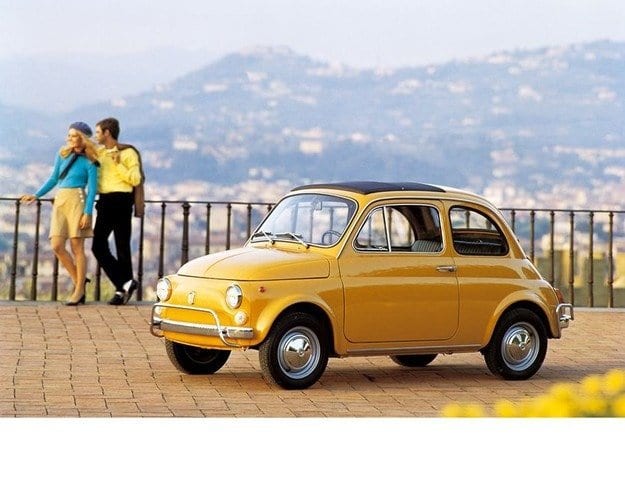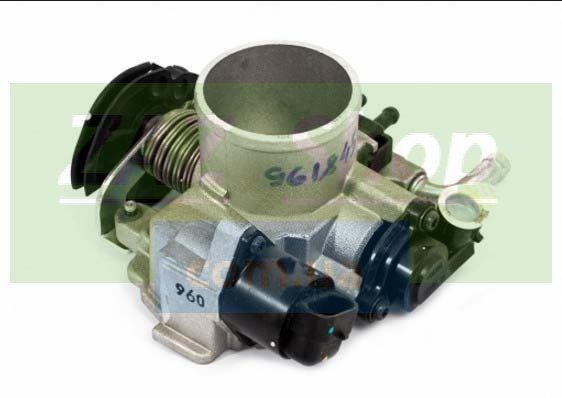
Test drive unknown Fiat

60 years of Centro Stile Fiat a good excuse to take a look at a unique history
Individual development is a brief repetition of the historical - the truth of this statement of Ernst Haeckel has long been recognized in the theory of evolution. However, we can fully apply this to automotive development.
BMW marketing will not fail to mention that aircraft engines are in the company's genes and even the brand image reflects this, while Mercedes is proud to make trucks and buses. But what about the group under the name Fiat - although currently formally divided into an automotive division, including Chrysler and a line of light trucks and an industrial group that includes Iveco trucks, Case and New Holland agricultural equipment, and marine engines. In the early history of the brand, which began in the suburbs of Turin in 1899, we can find artifacts such as aircraft engines and even airplanes. In fact, the aviation division of the company (Fiat Aviazione) produced aircraft between the two wars, in 1955 the Fiat G91 was chosen as a tactical fighter by NATO, and under the name Fiat 7002 hides a helicopter. Did you know that there are locomotives with the name Fiat.
In fact, the Fiat automobile company, which today owns almost all Italian car brands - from Alfa Romeo to Copje, Maserati and Ferrari, and more recently the American Chrysler, is deeply rooted not only in the industrial life of Italy, but is also part of an invaluable historical heritage. Fiat is implanted in the genotype of an Italian with his specific mentality. In a country with a history of the Roman Empire and personalities such as Leonardo and Michelangelo for the past 119 years, the pioneer Fiat is present as an unchanging story thread. And not only by its contribution to the gross domestic product of Italy. Because the brand is both a treasure for Italy and a company that has made a huge contribution to the development of the car as a whole, with undeniable masterpieces in design and technology. I was fortunate enough to speak with Italian engineers several times and I can say that this is a truly unique experience. Only an Italian designer can tell about his creations with the scope, energy and zeal of a conductor, with an engineering speech that beats from the depths of his essence and sounds like the melody of an Italian opera. 1958, when their Centro Stile was created, figures in the historical annals of Fiat, making it virtually the first car of its kind in Europe. Located at the epicenter of the creative spirit, the company often collaborates with design bureaus of stylists such as Froy, Pininfarina and Giugiaro in the Turin area. And today we owe to Fiat's Centro Ricerce Technical Center (CRF) some of the most valuable advances in automotive technology, namely to the engineers at Fiat, whose development center is now Fiat Powertrain Technologies or FTP, the world owes to the common rail system for diesel engines and subsequent Multijet, their work is the first turbocharged diesel engine with direct injection, created in 1986. The creations of FTP or its predecessor FCR are the incredible MultiAir hydraulic drive and suction valve control system, T-JET petrol turbo engines, the first modern TwinAir twin-cylinder engine, the first Selespeed automated manual transmission in the late eighties, the first system in 1980 gasoline engines and in transmission with two TCT clutches. Such a popular in recent years technology of using a common platform for several models was first introduced by Fiat engineers with the models 127 and 128 in the late 60s and early 70s! And just for the sake of statistics - Fiat still holds the record for the car with the largest engine - the displacement of the four-cylinder (!) Fiat S76 engine of 1910, called the "Turin Beast", is no more and no less than 28,3. , 300 liters, has a power of exactly XNUMX hp. at 1900 rpm and was designed to outperform the then Blitzen Benz at all costs. It reached a record speed of 1912 km / h in 290 and is a phenomenal counterbalance to the minimalist functionality of many of Fiat's creations that make it unique. Yes, the Italian company has repeatedly focused on the luxury segments of the automotive market throughout its history, but in the end its true essence is gradually being built and established as the creator of innovative yet affordable products. The above are just the most impressive creations of Italian engineers - even in the most difficult periods of its history, such as the decade that began in 1970, when Italy and Fiat in particular were torn apart by strikes, engineers and designers continue to create cars with an irresistible spirit. Even before World War II, which made his name an important factor in the global auto industry, Fiat had plans for a national car. The Topolino 500 laid the groundwork, but with the true motorization of Europe in the 1936s and 50s, Fiat played a major role in its incredible 60s and 600s, created by brilliant stylist and engineer Dante Giacosa, who worked for 500 years. his career at Fiat. As the population riches, Fiat will continue to produce more modern 1100, 1300/1500, 850, 124, 125, 128 and 127 in the same spirit, many of which will be produced in third countries such as India, the Soviet Union and even Bulgaria, and will help ... for motorization of entire nations.
At the forefront of design, technology and manufacturing
As early as the 20s, Fiat executives focused on introducing large-scale production methods at a new, state-of-the-art plant in Lignoto, and in 1946 they visited Chrysler to learn from its experience in the modern automobile industry. History sometimes presents us with strange paradoxes - 70 years later, Chrysler is now owned by Fiat. A study of the history of Fiat could have been the result of many dissertations that captivatingly expressed the fusion of Italian engineering and Italian stylistic spirit, as well as its undoubted contribution to the development of automotive culture. However, all this is not just the result of conclusions and a formal enumeration of facts, but something much deeper, because design is directly related not only to designers, but also to the capabilities of production processes, the science of aerodynamics and is the result of a complex organization. This stylistic spirit can be traced throughout the history of Fiat - from the flowing lines of the Art Nouveau period or the clean lines of the rationalism of the early 20s, to the functional forms with the manifestation of the first elements of aerodynamics of the 30s, the minimalism of the form of the 50s, the flat surfaces of the 60s. 70s and 80s, a modern evolution of functionality that began in the XNUMXs.
(to follow)
Text: Georgy Kolev
